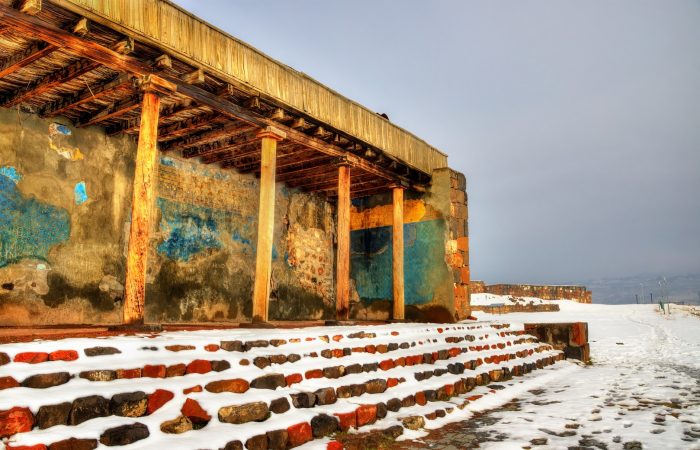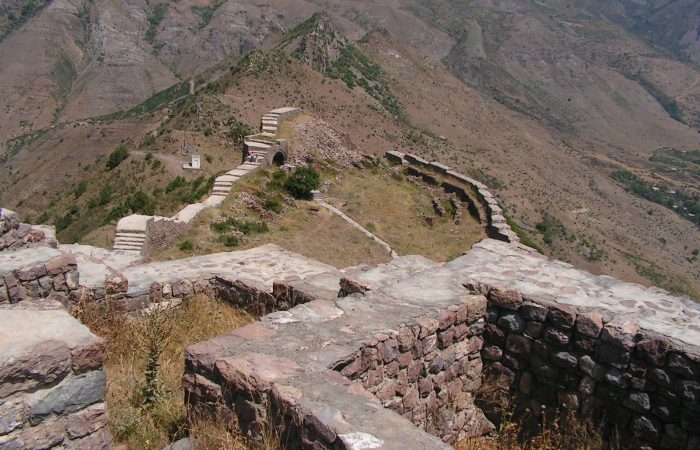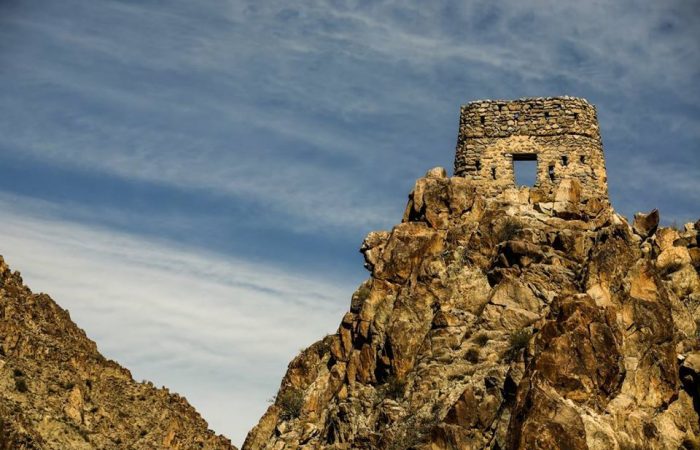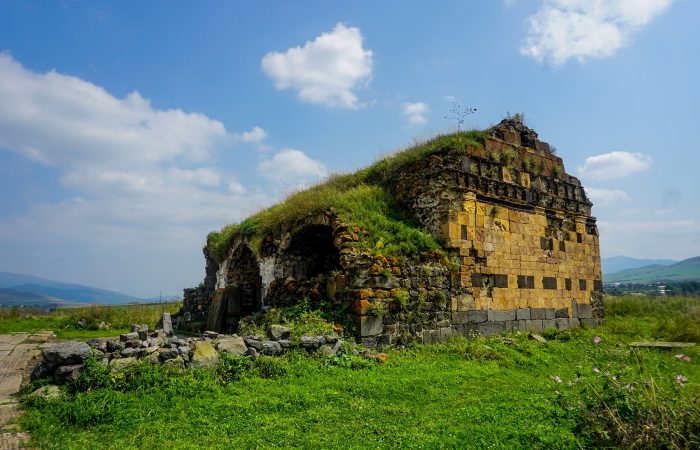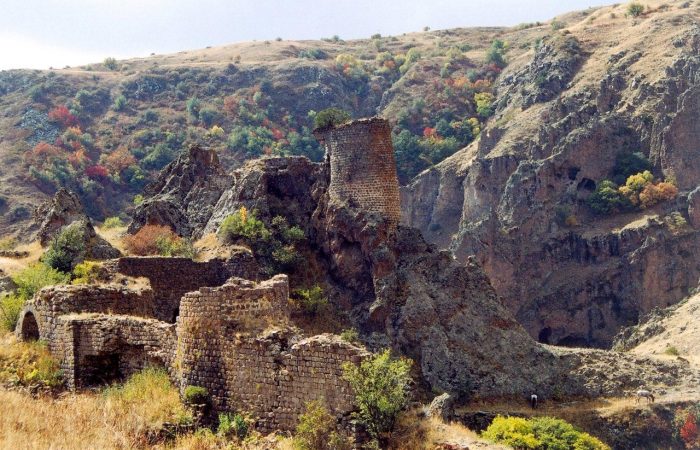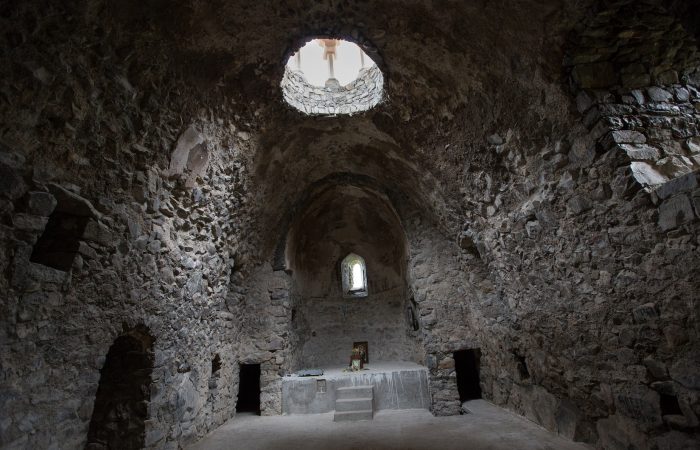Built on top of a hill Berdavan Fortress dates to the 10th-11th centuries. The fortress was reconstructed in the 17th century.
The fortress was further reconstructed in 1980s, more precisely in 1983, as well. Then, the ruins were cleared out. Other than that, the serf walls and towers also went through reconstruction.
Berdavan Fortress: Closer Look
The walls of the fortress are almost entirely preserved. Clay plates and metallic axes were found by the serf wall, which means there once were shelters and storehouses. Though all the walls of the fortress were 1.2 meters wide, they varied in their height. The latter was conditioned by the relief. Presently, the southwestern walls are lower than those stretching from the west to the north. The southwestern walls are 5.5 meters high, while the west-northern are 10.5 meters high. At the top of the walls there are so-called windows. The opening of the windows makes 12-15 centimeters. In all probability, they were used to look outside.
There was only one entry to the fortress and it was from the western side. The entry is 1 meters wide. To the south from the entry there are stairs.
Also, the fortress had a secret passage leading to the canyon. The eastern tower has a high door, which leads there. The tower is made of yellowish felsite and limestone. The walls are plastered, and inside several brick reconstructions can be seen.
The walls include decorative splinters. They probably date to an earlier period. One of those splinters features an equal-winged cross in a circle.
Berdavan Fortress: Three-Nave Church
To the southwest from the fortress there is a three-nave church. The church has a rectangle praying hall, which is divided into three naves by a pair of arches. There are two vestibules on the sides of the middle nave. The church has only one entry and it is from the north. The two iron rings found on both sides of the entry allow to conclude there once was a wooden hall in front of it.
At the eastern side of the church there is the semi-circular apse on both sides of which there are prayer rooms. The church is believed to be built in late medieval period.
Berdavan Fortress: Medieval Cemetery
Somewhere not far from the church there is a medieval cemetery, which includes a number of tombstones, statues and khatchkars (cross-stones). One of the khatchkars is especially popular. It’s a huge cross-stone carved in the shape of a cross. The cross-stone leans on a cube shaped pedestal. It includes cross images as well as figures of standing people.
Berdavan Fortress: Archaeological Excavations
Archaeological excavations were held at the site. The excavations revealed a number of ceramic plates and metal axes. Based on these findings as well as several other items conclusions were made regarding the life and work of the people who once lived in Berdavan.
Berdavan Fortress: The Village
The Village of Berdavan was once called Ttandzor and later renamed to Ghalacha. The latter was mentioned since the 3rd century. The Fortress of Berdavan was built because of the location of the village and it pursued one goal – to protect the village and the nearby villages.
Ghalacha was renamed to Berdavan only in 1982.






